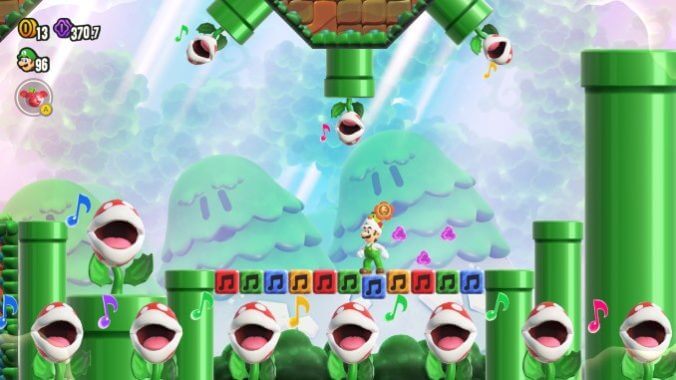Super Mario Bros. Wonder‘s Enemies Are Adorable

You can’t discount the importance of a good bad guy—or at least a cute one. One of the many reasons the Super Mario games have been so popular over the last 40 years is the lineup of weird, quirky critters Mario has to defeat. From grumpy, ambulatory mushrooms, to chomping mad man-eating plants, to, um, straight-up just turtles, Mario’s stomped and fireballed a wide-ranging crew of adorable weirdos and pesky sweethearts. Bowser and his army of miscreants are as iconic as Mario and Luigi themselves, and their gradual evolution since Super Mario Bros. has been one of the many rewards long-time players have enjoyed over the decades. And with Super Mario Bros. Wonder we’ve seen perhaps their biggest jump yet.
I had heard about some of the newly found self-awareness within the latest crop of Goombas and Koopas. Those brown little mushroom guys—Bowser’s perennial first wave of (almost entirely futile) assault—now acknowledge Mario right before he flattens them beneath his prodigious girth. Their eyes look upward at Mario as he’s about to land on them, their little mouths twisting in horror as they realize they’re about to wind up on the wrong end of his comically bulbous boots. Meanwhile the turtle-like Koopas, who always seemed way more easy-going than their fungal brethren, now turn up their faces in sadistic glee when they see the plumber head their way. They can’t wait to kill this man, almost as if they all live with the weight of the several generations of failure their kind has lived through, the entire swaths of Koopa populations crushed beneath the mustachioed one’s feet. Of course they also seem blissfully unaware of why all their ancestors failed—of how, ultimately, they’re almost at the very bottom of this game’s food chain, existing entirely to make for easy fodder while newcomers are just learning the ropes. It doesn’t matter how confident these vengeful Koopas act: they’re practically guaranteed to die just like most of their forebears.
I knew to expect these little glances from Mario’s most common enemies. I’ve seen GIFs on Twitter, come across links to other articles that touch on this one minor aspect of Super Mario Bros. Wonder. People dig ‘em (for good reason) and they’re part of why the game has become so celebrated so quickly.
I did not anticipate the singing Piranha Plants, though.
One of Wonder’s major new additions to the Mario canon is the Wonder Flower. It’s a big blue bouncing flower that doesn’t give Mario a power-up but does trigger a psychedelic hurry-up state called a Wonder Effect that warps the level and its characters in weird and unpredictable ways. It’s like an alt mode for each level, often built around collecting purple coins as quickly as possible to keep adding time to the Wonder Effect’s clock. From what I’ve seen Wonder Flowers can incite some of the most hallucinatory and memorable sequences in recent Super Mario history, which help make Super Mario Bros. Wonder one of the most surprisingly unique games in the series’ long history.